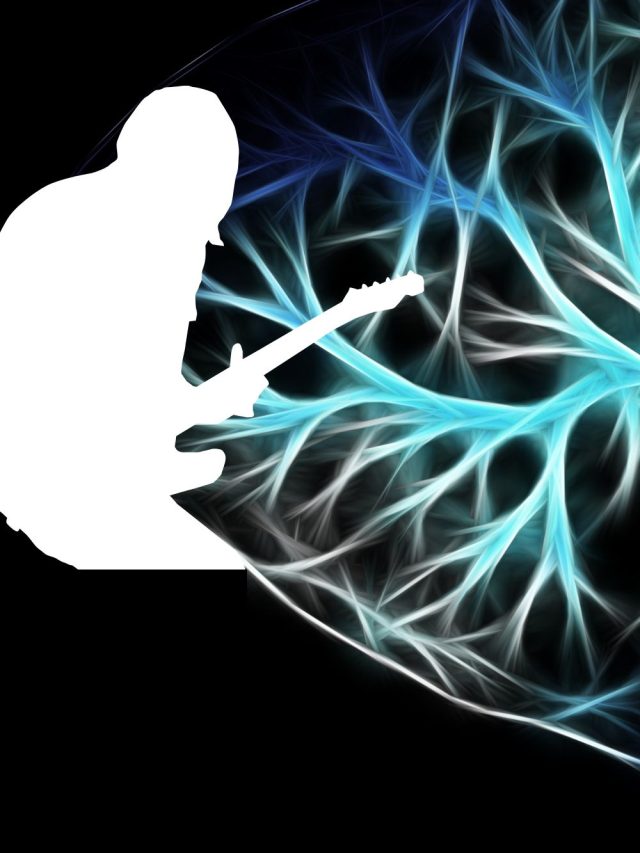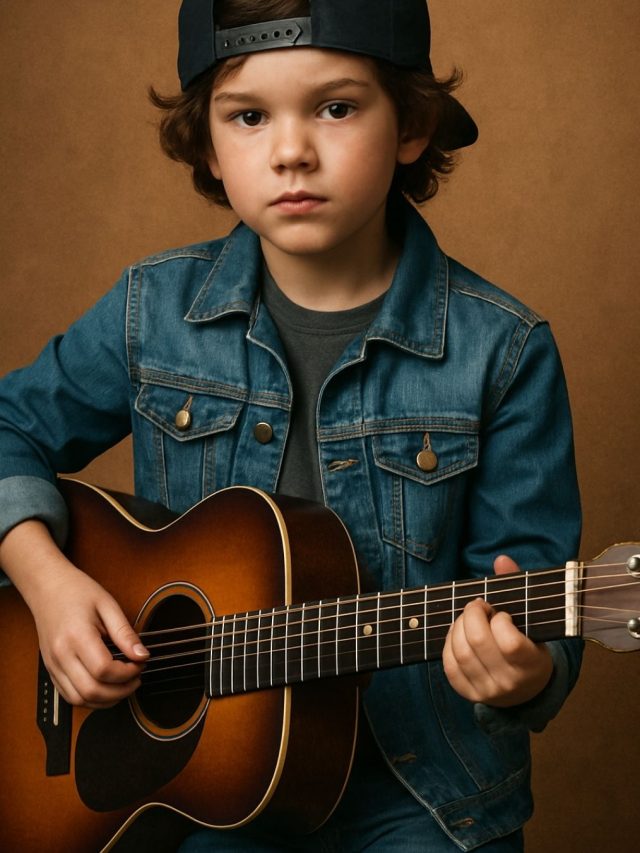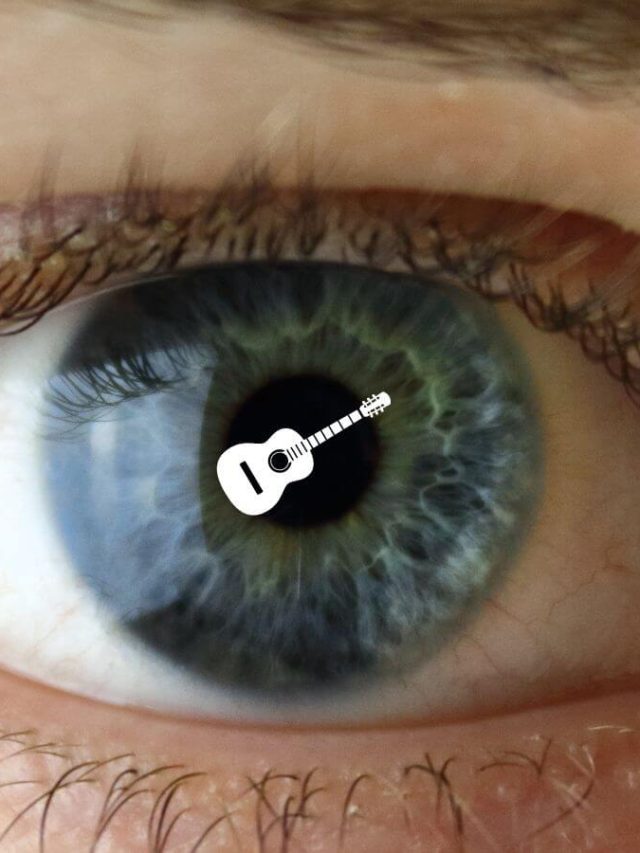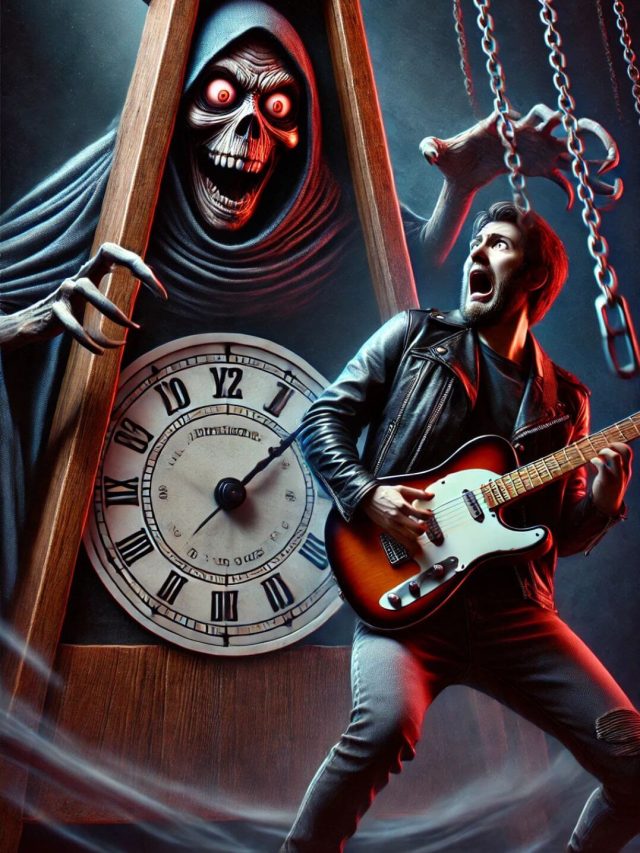You can speed up your guitar progress with just a few neuroscience-based learning boosters. Think of these as simple additional hacks to your current practice routine – don’t change anything – just add these as extras and you’ll see dramatic improvements.
Chapters
1. Use lower frequency notes to improve timing and master the essence of a sequence
Humans process time better at lower frequencies[1]. This is also one of the reasons why the bass feels groovier. If you are stuck on getting your timing right, start with bass notes or replicas of your lick on the low E and A strings. This makes your brain process the sounds and timing better because they are low-frequency sounds.
When composing you can lay down your sections on bassy notes so you get an idea of the groove.
Practice the timing of a riff with single bass notes on the lower frequency strings. Ensure you nail the timing and rhythm structure with those first. It’ll be easier to get the outline and then substitute the main riffs for those bass notes.
If you are finding it hard to play a complex riff, practice its outline with root notes or bassy substitutes. Once you get those substitutes right, practice the complex bits.
2. Overlearn your target skill
Once you nail something, do a few extra repetitions to hammer in your chops to prevent a drop in skill over time. Overlearning[2] (practicing after successfully learning something) will also reduce interference from other learning and activities that can weaken your performance gains.
Suppose you are practicing a chord transition for days and today is the day you start nailing it. Start overlearning it today with many continuous “perfect” repetitions. Generally, use maximum practice energy towards the end of mastering your licks to make that learning resilient and defend against gradual loss of skill due to lack of practice.
If you don’t do this, there is a natural decay in learning and performance starts dropping. Unless you overlearn your perfect performance. Think of it as a final neural fortifying process for that playing sequence.
3. Use a blindfold to improve muscle memory and pitch memory
When visual feedback is cut[3], brain activity in touch and sound processing increases due to neural plasticity. Neural plasticity is the brain’s ability to form new neural connections and change its default activity patterns.
This learning hack is simple. Put on a blindfold or an eyemask and practice. You’ll see massive performance gains in your muscle memory.
This will also draw your attention to touch and sound because the brain by default prefers visual data (it’s called visual precedence). When you cut the visual stream, your attention is forced to pay attention to things the brain previously neglected. This will help you differentiate notes, develop your ear, notice how ready your hand is for the next sequence, identify musical layers, and most importantly, improve confidence to play. This will go a long way if you play on stage where the lights are flickering and you can’t really pay attention to your fretboard!
4. Take a nap right after an intense practice session
Daytime napping[4] can improve memory consolidation of motor skills. So if you are struggling to see progress during a practice session, sleep will speed it up before your next session. If you are learning something complex, take a break after practice.
Naps are excellent breaks. The brain automatically continues processing your learning and solidifies it. This process starts right after you stop practicing and enhances when you are doing a non-interfering task – and sleep is the best non-interfering task.
5. Practice your right hand to train your left hand, and vice versa
The brain has a property called bilateral transfer. When you practice something with one hand, there are performance gains with the other hand on the same or similar activity. If you practice finger movement with your right hand only, you’ll see improvements in your left hand.
In short, finger dexterity will bilaterally transfer. The ideal method to do this is to do a few reps with one hand and then practice the other hand on a similar sequence.
You can practice picking finger style for 20 repetitions and automatically improve fretting dexterity.
This is a very valuable practice method when one hand is fatigued. You can shuffle between right hand and left hand practice, then take a break, and do both hands together for maximum improvement.
6. Use body movements to get your timing right, process music, and add personality to your playing
Playing music with your hands and the rest of your body have a deep feedback relationship – the instrument is an extension of the body[5]. The current approach to understanding music is an “embodied music cognition[6]” with “action-sound[7]” pairings. You can use your body to alter your music and even keep a groove going. More over, most body movement quickly become habits so you they don’t take away attention from your instrument. Here are some common movements that help:
- Finger and wrist wiggle – signature vibrato
- Leg tap and neck bob – keeping time
- Swaying – keeping a groove
- Abrupt body movements – natural dynamics in playing
Now, changing your posture will slightly change all the angles and muscle movements needed to perform. These create variations in playing and those variations change sound. For example, choosing to pick certain notes closer to the fretboard will change your playing dynamics based on timbre (the natural sound of the guitar) and attack (the initial force of the note). Lowering or raising the guitar will also change these and also affect how your hand naturally wiggles – so your vibrato and noise in playing will change. I define noise as all those additional sounds that come – the sticky sound on fretboard, the palm thumping on the guitar body, etc. These add personality to your playing.
While listening to music and analyzing it, hand gestures and body movements that point to a time and place help to process the music. These are called deictic references and they help process sounds and their meaning as if its a location in space and time. This also combines musical sounds to your visuo-spatial memory – which is our strongest memory system that processes things as locations in a space.
As a listener trying to learn a melody by ear or remember key moments of a song, you can use deictic references in the air in front of you.
Point your hands as if you are making a motion for the sound.
- Every rhythmic break or a breakdown can have a karate chop.
- An escalating melody can have your hands moving up the stairs.
- A drop in musical tempo or frequency can have your finger move down.
In short, you are creating a small finger and hand dance for the music. This literally connects the music and the body and reinforces your learning and musical perception. And yes, air guitaring is a perfectly valid way to learn music because it is creating a music-body connection.
References
[2]: https://www.nature.com/articles/nn.4490
[3]: https://pubmed.ncbi.nlm.nih.gov/15050709/
[4]: https://pubmed.ncbi.nlm.nih.gov/17694051/
[5]: https://biblio.ugent.be/publication/844863/file/944424
[6]: https://psycnet.apa.org/record/2014-19965-008
[7]: https://www.duo.uio.no/handle/10852/27149










